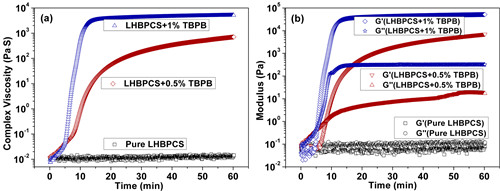Silicon carbide (SiC) ceramics have excellent comprehensive properties such as high temperature resistance, abrasion resistance, corrosion resistance, radiation resistance, oxidation resistance, small thermal expansion rate and high thermal conductivity. They are key in aerospace, nuclear power, high-speed locomotives, weapons and equipment, etc. The field has important application value. SiC ceramics are difficult to mold due to their extremely high thermal stability and strength.
At present, the preparation of ceramic materials in the world mainly uses traditional powder molding methods, including micropowder preparation, molding (calendering, extrusion, dry pressing, isostatic pressing, pouring, injection, etc.), sintering (hot pressing sintering, reaction sintering, Atmospheric pressure sintering, atmospheric pressure sintering, hot isostatic pressure sintering, discharge plasma sintering, etc.), processing and other processes. In the past 30 years, new types of ceramic materials have been emerging, and breakthroughs have been made in all aspects, but there are still limitations and high preparation temperatures (although the addition of sintering aids can reduce the sintering temperature, but the sintering aids will affect the performance of ceramics ), Difficult to obtain uniform chemical composition and microstructure, difficult to finish, and difficult to solve the high brittleness of ceramic materials.
Advanced ceramic preparation technology must make breakthroughs in raw material preparation, molding, and sintering. Since Yajima and others used polycarbosilane to prepare SiC ceramic fibers in 1975, the precursor conversion ceramic technology has entered people's vision. According to a BCC Research survey report, the global ceramic precursor market was US $ 437.6 million in 2017 (of which SiC ceramic precursors accounted for 40.4% of the market share), and it is expected to reach US $ 712.4 million by 2022, with an average annual growth rate of 10.2%. The so-called precursor conversion ceramic is a polymer that can be converted into a ceramic material by high-temperature pyrolysis first by a chemical synthesis method, and after molding, the ceramic material is obtained by high-temperature conversion. It has many advantages: molecular designability: the chemical composition and structure of the precursor can be designed and optimized through molecular design, and then the ceramic composition, structure and performance can be adjusted; good manufacturability: ceramic precursors are organic Molecules, inherit the advantages of good polymer processing, such as dissolvable impregnation, spinnable, moldable, foamable, 3D printing, etc., so it can be used to prepare low-dimensional materials that are difficult to obtain by traditional powder sintering processes And complex configurations, such as ceramic fibers, ceramic films, complex three-dimensional components, etc .; can be ceramicized at low temperature without introducing sintering aids; can prepare ternary and multivalent covalent bond compound ceramics; obtain fiber-reinforced ceramic materials, thereby Solve the problem of high brittleness of ceramic materials.
The precursor conversion ceramic technology can flexibly control and improve the chemical structure, phase composition, atomic distribution and microstructure of ceramic materials, and has advantages that traditional ceramic preparation technology cannot match. The key to preparing ceramic materials by the precursor conversion method is whether a suitable precursor can be prepared, which directly determines whether a ceramic material with excellent properties can be successfully prepared. The SiC ceramic precursors currently successfully developed and applied are mainly solid polycarbosilane (PCS). However, PCS as a precursor of SiC ceramics still has deficiencies. For example, C / Si in PCS is 2, and its pyrolysis products are rich in carbon, which ultimately affects the performance of SiC ceramics. PCS ceramics have a low yield; they are solid at room temperature and are used for When forming the ceramic matrix in the composite material, solvents such as xylene and tetrahydrofuran are required during the impregnation process, and these solvents need to be evaporated before cracking, resulting in a long preparation cycle and cumbersome processes.
Recently, the Nuclear Energy Engineering Laboratory of the Ningbo Institute of Materials Technology and Engineering, Chinese Academy of Sciences has prepared a fluidity (complex viscosity 0.01 ~ 0.2Pa · S), long storage time (> 6 months), and low oxygen content (~ 0.1 wt%), high ceramic yield (1600 ℃ ceramic yield reaches ~ 79wt%), C / Si in ceramic products is ~ 1.1, and the quality change of liquid hyperbranched polycarbon after static oxidation at 1500 ℃ is less than 3% Silane (LHBPCS). The quality of the samples has been affirmed by multiple application units. In addition, the research team has also conducted in-depth research on the curing cross-linking mechanism of LHBPCS, which can realize its light curing molding and low temperature thermal curing molding. The gelation time is only a few minutes, and the structure is dense and free of cells.
Related research results were published in J. Eur. Ceram. Soc., Adv. Appl. Ceram., J. Am. Ceram. Soc. And other journals. Related research has been supported by major research projects of the National Natural Science Foundation of China and key deployment projects of the Chinese Academy of Sciences.

Figure 1. The prepared LHBPCS and the dense morphology after crosslinking curing and sintering

Figure 2. Change of crosslinking rate of prepared LHBPCS under different thermal initiator (TBPB) content
2 In 1 Screwdriver Set,Wood Chisel,Double Edge Saw File,Diamond Saw Blade
SHAOXING SINO IMPORT & EXPORT CO.,LTD , https://www.sxsmarto.com